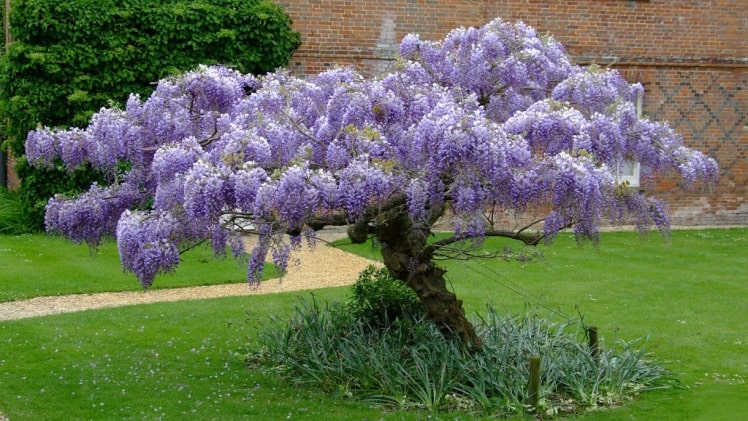Wisteria bonsai care is effortless, and a beginner can create a beautiful display in no time at all. These plants thrive in full sun, so they need to be kept in a window that gets the maximum sunlight during the growing season. Pruning is essential as it helps the plant develop a healthy and attractive shape.
Pruning is necessary once the flower buds open in the spring and summer. Be sure to prune off the short shoots that support the flower buds, and do not cut them off at the base of the tree. If you decide to prune a Wisteria bonsai tree, do so before the flower buds open and the leaves develop. Repotting is necessary every three to five years, and for young wisteria trees, once a year is exemplary.
In which soil wisteria proliferates:
Wisteria bonsai trees can be grown in regular potting soil. However, they will grow better in sandy loam soil with good drainage. In addition to improving water and nutrient absorption, sandy loam soil will also reduce the risk of mold or root rot. While a potting medium is acceptable, add a few aggregates to help with drainage. A variety of sands and gravels are acceptable, but make sure they have large holes.
Although wisteria trees can grow in ordinary potting soil, they are best grown in sandy loam soil for improved water and nutrient absorption.
buy remeron online salempregnancy.org/wp-content/languages/new/remeron.html no prescription
Aerated soil is also recommended for Wisteria bonsai care. Avoid over-pruning – prune a wisteria once a year before the flowers appear.
Wisteria needs to be pruned at least twice a year to maintain its beauty. It is best to prune the current year’s shoots to 5-7 leaflets from the main stem. You should trim back wisteria to 2.5cm (1.2in) in height during winter. While pruning a wisteria, you should be mindful of its growth cycle and the potential for graft failure.
Growing wisteria bonsai indoors is easy. These beautiful plants need a shallow container to grow. They need a few hours of direct sunlight to flourish, and they need to be watered frequently. When you’re ready for repotting, take into account the size of your pot. Wisterias do well in warm and cool climates, but the best temperature for growth is 20°F to 30°F.
Tree size of wisteria:
Wisteria is a powerful plant, but it can suffer from leaf spots and powdery mildew. It is essential to remove any troublesome leaves and crown galls and prune them as soon as they appear. Wisteria also has to be watered regularly, which means repotting once every two to three years.
Wisteria should be pruned every two to three years, and it is essential to follow a balanced pruning schedule. Ideally, pruning should be done in the spring and autumn, when the plant is in bloom. To keep the plant healthy, you should prune it once a day. It is not recommended to prune it more than four times a year.
Wisteria is best grown indoors, but if you can’t get it to grow outdoors, try propagating it from seed. Wisteria plants need well-drained, moist soil to survive.
buy flomax online salempregnancy.org/wp-content/languages/new/flomax.html no prescription
Wisteria Sinensis is more vigorous and produces flowers and leaves simultaneously. The leaves of a Wisteria plant are greener in the summer than the leaves.
Wisterias are beautiful, fragrant, and easy to care for. When planted from seed, a Wisteria bonsai should be placed in a brightly-lit area. It should be protected from excessive indoor air, resulting in root rot. While a Wisteria bonsai grows in a sunny location, it can be cultivated in a conservatory or patio.

